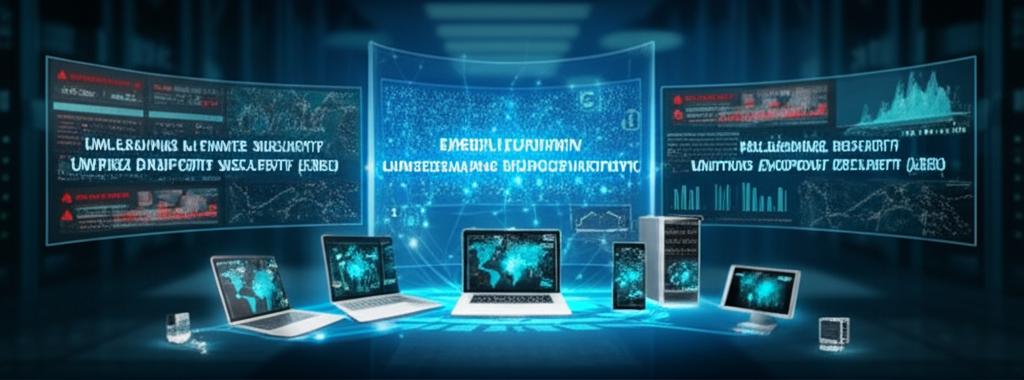Unleashing Ultimate Security: Understanding Unified Endpoint Security (UES)
What is Unified Endpoint Security (UES)? The Ultimate Guide
In today’s complex and constantly evolving threat landscape, securing every device connecting to your network is paramount. Traditional siloed security solutions often leave gaps, making management cumbersome and increasing the risk of breaches. This is where Unified Endpoint Security (UES) emerges as a game-changer, offering a consolidated, intelligent approach to protecting and managing all endpoints across your organization.
Unified Endpoint Security (UES) represents an evolution in endpoint protection, integrating traditionally disparate security and management functions into a single, cohesive platform. It extends beyond traditional laptops and desktops to encompass mobile devices, IoT devices, cloud workloads, and more, providing a holistic view and centralized control over your entire digital estate.
The Evolution to UES: Beyond Traditional Endpoint Security
For years, organizations relied on a mix of Endpoint Protection Platforms (EPP) for basic antivirus and anti-malware, and Endpoint Detection and Response (EDR) for advanced threat hunting and incident response. While effective in their own right, managing these solutions separately often led to operational inefficiencies, alert fatigue, and a fragmented security posture.
- EPP (Endpoint Protection Platform): Focused on preventing known threats.
- EDR (Endpoint Detection and Response): Focused on detecting and responding to unknown and advanced threats.
- UES (Unified Endpoint Security): Integrates EPP, EDR, and a host of other capabilities into a single, unified solution for comprehensive management and security.
Unified Endpoint Security (UES) builds upon the strengths of EPP and EDR, adding critical functionalities like vulnerability management, mobile device management (MDM), data loss prevention (DLP), and identity and access management (IAM), all managed from one central console.
Core Components and Capabilities of Unified Endpoint Security (UES)
A robust Unified Endpoint Security (UES) solution typically includes a comprehensive suite of features designed to provide unparalleled protection and control:
- Unified Management Console: A single pane of glass for monitoring, configuring, and managing all endpoints and security policies.
- Advanced Threat Detection & Prevention: Combines EPP’s signature-based and behavioral analysis with EDR’s ability to detect sophisticated attacks, ransomware, and fileless malware.
- Vulnerability Management: Identifies and helps remediate security flaws in operating systems and applications.
- Data Loss Prevention (DLP): Prevents sensitive data from leaving the organization’s control, whether accidentally or maliciously.
- Mobile Device Management (MDM): Secures and manages smartphones, tablets, and other mobile devices, enforcing policies and enabling remote wipe capabilities.
- Identity & Access Management (IAM): Ensures that only authorized users and devices can access corporate resources.
- Cloud Workload Protection (CWP): Extends security to virtual machines and containers in cloud environments.
- IoT Security: Provides visibility and control over Internet of Things devices, which are often a neglected attack surface.
- Compliance Reporting: Assists with regulatory compliance by providing detailed audit trails and reports on security posture.
Why is Unified Endpoint Security (UES) Critical Today?
The imperative for adopting Unified Endpoint Security (UES) stems from several modern challenges:
- Exploding Endpoint Diversity: The proliferation of laptops, mobile phones, tablets, smart devices, and cloud instances creates an expansive attack surface.
- Sophisticated Threats: Cybercriminals employ advanced tactics that can bypass traditional, siloed security tools.
- Remote Work & Hybrid Environments: With employees working from anywhere, securing devices outside the traditional network perimeter is crucial.
- Operational Complexity: Managing multiple security vendors and consoles leads to inefficiencies and increased operational costs.
Key Benefits of Adopting a UES Solution
Implementing Unified Endpoint Security (UES) offers a multitude of advantages for organizations striving for a stronger security posture and streamlined operations:
- Simplified Management: A single platform significantly reduces the complexity of managing disparate security tools, saving time and resources.
- Enhanced Visibility: Gain a comprehensive, real-time view of all endpoints, their security status, and ongoing activities.
- Superior Threat Protection: Leverage integrated EPP and EDR capabilities for multi-layered defense against a wide range of cyber threats.
- Improved Incident Response: Faster detection and automated response capabilities reduce the mean time to respond (MTTR) to security incidents.
- Reduced Costs: Consolidating solutions can lead to cost savings on licensing, training, and operational overhead.
- Strengthened Compliance: Centralized policy enforcement and reporting help meet regulatory requirements more effectively.
- Greater Agility: Adapt quickly to new threats and business requirements with a flexible and scalable security framework.
Implementing UES: Best Practices
To successfully deploy a Unified Endpoint Security (UES) solution, consider these best practices:
- Assess Current Environment: Understand your existing endpoints, security gaps, and compliance needs.
- Phased Rollout: Begin with a pilot program to fine-tune configurations before a full deployment.
- Policy Definition: Clearly define security policies for different device types and user groups.
- User Training: Educate employees on security best practices and the importance of UES.
- Continuous Monitoring & Optimization: Regularly review security alerts, update policies, and optimize the UES platform to stay ahead of evolving threats.
Conclusion
Unified Endpoint Security (UES) is no longer just a trend; it’s a strategic imperative for any organization aiming to build a resilient and robust cybersecurity defense. By consolidating security and management functions, UES simplifies operations, enhances visibility, and delivers superior protection against the ever-growing array of cyber threats. Embrace UES to empower your organization with ultimate security in a connected world.







